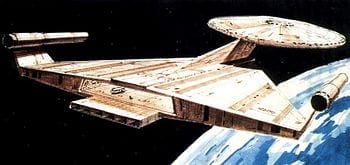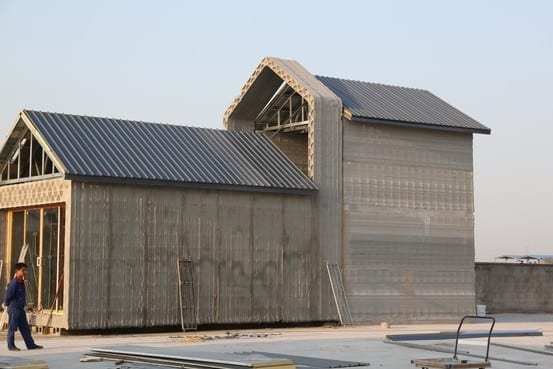
A surprising number of scientists, engineers and amateur space enthusiasts fervently believe in this dream
As any avid Star Trek fan can tell you, the eccentric physicist Zefram Cochraneinvented the warp-drive engine in the year 2063. It wasn’t easy. Cochrane had to contend with evil time-traveling aliens who were determined to stop him from building the faster-than-light propulsion system (see the 1996 movie Star Trek: First Contact for details). But in the end he succeeded, and centuries later his warp drive powered the interstellar voyages of the starship Enterprise.
What Star Trek fans may not know is that a physicist in the real world—specifically, at NASA’s Johnson Space Center in Houston—is investigating the feasibility of building a real warp-drive engine. Harold “Sonny” White, head of the center’s advanced propulsion program, has assembled a tabletop experiment designed to create tiny distortions in spacetime, the malleable fabric of the universe. If the experiment is successful, it may eventually lead to the development of a system that could generate a bubble of warped spacetime around a spacecraft. Instead of increasing the craft’s speed, the warp drive would distort the spacetime along its path, allowing it to sidestep the laws of physics that prohibit faster-than-light travel. Such a spacecraft could cross the vast distances between stars in just a matter of weeks.
For readers and writers of science fiction, this is extraordinary news. It doesn’t really matter that other physicists scoff at White’s idea, arguing that it’s impossible to alter spacetime in this way. Nor does it matter that NASA has allocated only $50,000, a mere smidgeon of the space agency’s $18 billion budget, to the warp-drive research. What makes White’s project so exciting is the immensity of the challenge. It’s heartening to know that even in this era of fiscal belt-tightening, the federal government is willing to place a small bet on the big dream of interstellar travel.
A surprising number of scientists, engineers and amateur space enthusiasts fervently believe in this dream. They’ve shared their hopes and hypotheses at academic conferences. They’ve founded organizations—the 100 Year Starship project, the Tau Zero Foundation, Icarus Interstellar—that seek to lay the groundwork for an unmanned interstellar mission that could be launched by the end of the century. Their ardor has grown in recent years as astronomers have detected a slew of Earthlike planets orbiting stars that are relatively near our sun. A few dozen of these worlds occupy the so-called “Goldilocks zone” around their stars—they’re neither too hot nor too cold to support life. If further observations confirm the existence of a habitable, idyllic planet in our corner of the galaxy, how could we resist sending an interstellar probe to explore this strange new world?
The problem is getting the spacecraft there in a reasonable amount of time. Believe it or not, NASA already has a probe that’s crossing the space between stars: Voyager 1, the plucky 1,600-pound craft launched in 1977 to investigate Jupiter, Saturn and their moons. After completing its primary mission the probe zipped past the outer planets, and in 2012 it left the solar system and entered interstellar space. Voyager has traveled almost 12 billion miles since its launch and is now zooming away from us at 38,610 miles per hour. But even at that blistering speed it would take at least 70,000 years to reach any of the nearby stars that might harbor habitable planets. Researchers need to make some serious breakthroughs in spacecraft propulsion to get there faster.
The Latest on: Interstellar Travel
[google_news title=”” keyword=”Interstellar Travel” num_posts=”10″ blurb_length=”0″ show_thumb=”left”]
via Google News
The Latest on: Interstellar Travel
- What happens inside a black hole: NASA's video simulationon May 9, 2024 at 4:47 am
What would we see if we had the chance to travel inside a black hole? A question covered in major Hollywood films (one above all Interstellar) and which has always fueled the debate among scientists.
- Meet HELIX, the High-Altitude Balloon That May Solve a Deep Cosmic Mysteryon May 7, 2024 at 5:00 am
Every now and then, tiny particles of antimatter strike Earth from cosmic parts unknown. A new balloon-borne experiment launching this spring may at last find their source ...
- Golden Record Re-spinon May 4, 2024 at 8:10 am
Instructions and a map for life unexpected By Krista Madsen– For Valentine’s Day, I wrote about the love story underneath the making of the Golden Record hurtling through outer space since 1977. Now ...
- Nasa engineers bring Voyager 1 back to life after interstellar glitchon April 27, 2024 at 5:00 am
After a sudden loss of contact in November, mission controllers were able to reestablish contact with the probe across 15bn miles of space ...
- NASA re-establishes communication with Voyager 1 interstellar spacecraft that went silent for monthson April 24, 2024 at 6:50 pm
NASA re-established communication with Voyager 1, an interstellar spacecraft that nearly five months ago began sending unreadable data back to the space agency.
- You'll Be Able to See Jupiter and Uranus Tomorrow Night — What to Knowon April 18, 2024 at 5:00 pm
On the night of April 20, two of Earth’s interstellar neighbors will hang ... and Uranus on Saturday Night The planet duo will travel from the western sky toward the northwest horizon as the ...
- Billionaire Kam Ghaffarian sets his sights on the stars with a range of space companieson April 17, 2024 at 5:00 pm
So, on the space side, if we say that the ultimate destiny for humanity is interstellar travel, and going to the stars, then we need to take a lot of intermediary steps to do that." It might sound ...
- Christopher Nolan’s ‘Interstellar’ Sets Imax 70mm Re-Release for 10th Anniversary This Fallon April 11, 2024 at 11:50 am
Christopher Nolan’s “Interstellar” will be re-released ... set in a dystopian future in which a group of astronauts must travel to the far reaches of space to find a new planet for humankind ...
- Exploring how Interstellar became a timeless masterpiece embedded in timeon April 6, 2024 at 3:11 pm
The film also intrigued the future of human exploration, and the possibility and perhaps the necessity of interstellar travel. Interstellar explores the interconnectedness of all existence and the ...
- Could Extraterrestrials Survive Space Travel?on March 22, 2024 at 10:38 am
Researchers who study attribution theory and cognitive bias [1,2,3] point out the dangers of assuming others will have the same values, motivations, constraints, and behaviors that we do.
via Bing News










